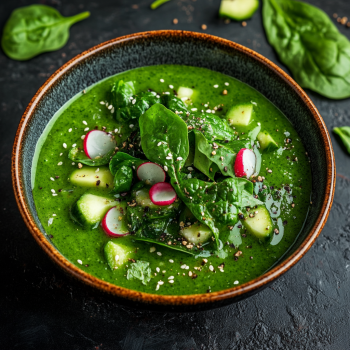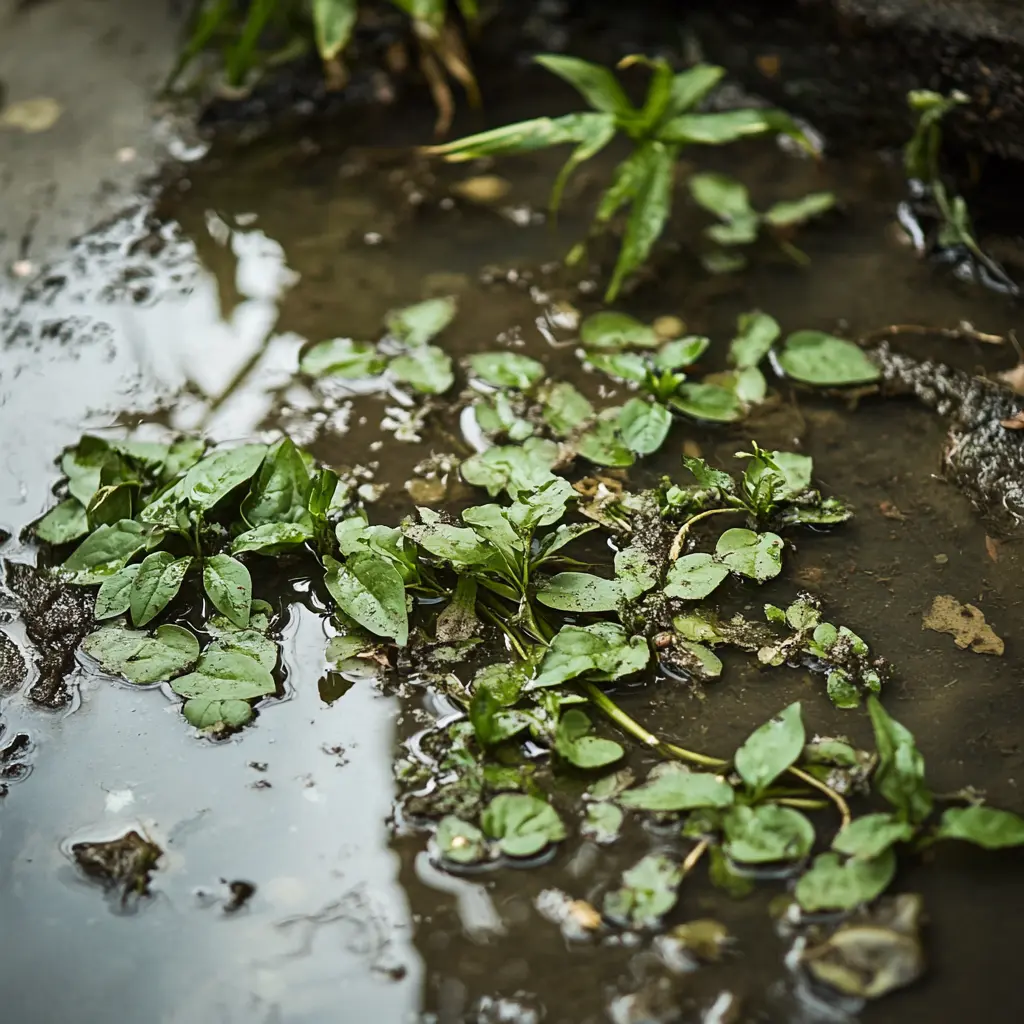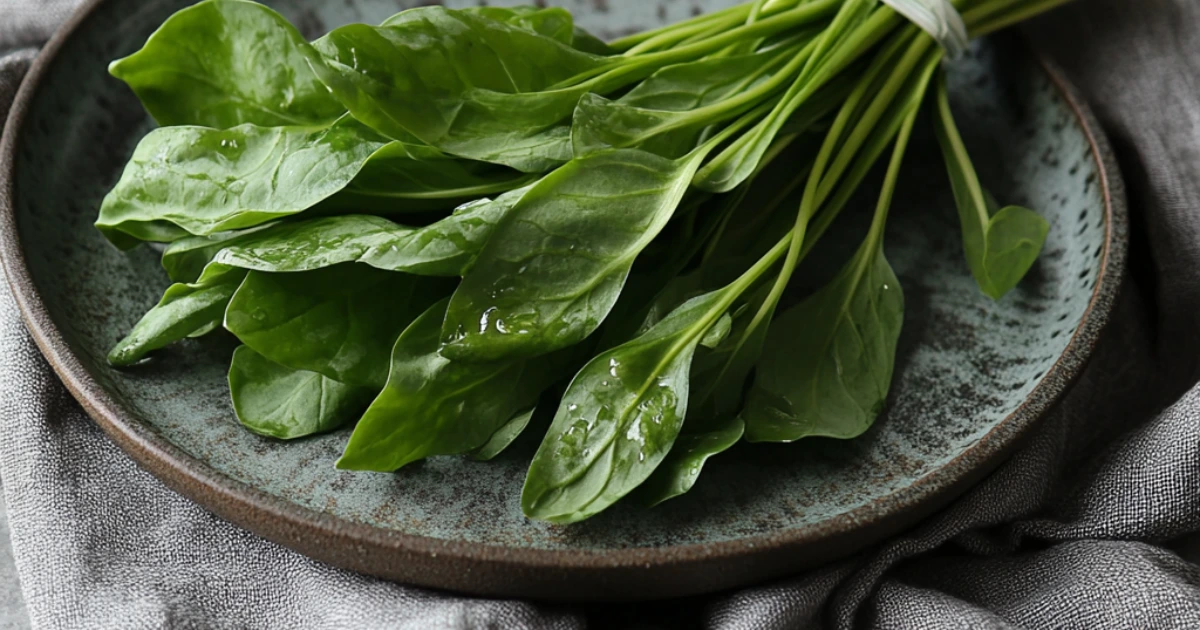Introduction
Water spinach (also known as Ipomoea aquatica) is a leafy green vegetable that thrives in aquatic environments. This versatile plant is popular in various cuisines worldwide, especially in Southeast Asia, where people value it not only for its distinctive flavor but also for its numerous health benefits. Known for its high nutrient content, water spinach has become a staple in many healthy diets due to its rich supply of vitamins, minerals, and antioxidants. In this article, we will explore what water spinach is, its nutritional profile, health benefits, and its many culinary uses.
Table of Contents
What is Water Spinach?
Water spinach is a semi-aquatic plant that originates from Southeast Asia and grows abundantly in warm climates. It thrives in water or wet, marshy soil and features long, tender stems with arrow-shaped leaves. You can often find water spinach in rivers, lakes, and ponds, where it flourishes in tropical climates, contributing to its vibrant green color and tender texture. People also call it by other names, such as kangkung in Malaysia and Indonesia or kangkong in the Philippines. Its adaptability has allowed spinach to spread to various regions, including parts of Africa and the Americas.
Cultural Significance
In many Southeast Asian cultures, it is a staple vegetable, frequently incorporated into dishes for both its flavor and nutritional value. It holds particular cultural importance in countries such as Vietnam, Thailand, and the Philippines, where it is used in a variety of soups, curries, and stir-fries. Traditionally, itis also valued in local herbal medicine due to its purported detoxifying and healing properties. As it becomes increasingly popular in other parts of the world, water spinach’s cultural significance is growing, making it a valued food for both health and culinary enjoyment.
Nutritional Profile
Water spinach offers an impressive array of nutrients that support overall health. It is low in calories yet high in essential vitamins and minerals, making it an ideal addition to a balanced diet. A cup of cooked spinach contains:
- Calories: Around 40-50 kcal
- Protein: 4-5 grams
- Carbohydrates: 7-9 grams
- Fat: Less than 1 gram
In addition to macronutrients, it is rich in vitamins, minerals, and antioxidants, which contribute to its health-promoting effects.
Vitamins and Minerals
Water spinach is a rich source of several key vitamins and minerals, including:
- Vitamin A: Essential for vision, immune function, and skin health.
- Vitamin C: A powerful antioxidant that supports immune function and skin health.
- Folate: Important for DNA synthesis and cell growth.
- Iron: Vital for red blood cell production and oxygen transport.
These nutrients play a crucial role in maintaining good health, making water spinach an excellent addition to any diet.
Fiber and Antioxidants
In addition to its vitamin and mineral content, it is an excellent source of dietary fiber, which promotes digestive health and helps regulate blood sugar levels. Fiber is also essential for maintaining a healthy weight and reducing the risk of chronic diseases.
- Fiber: One cup of cooked spinach contains about 3 grams of fiber.
- Antioxidants: contains a variety of antioxidants, such as flavonoids and carotenoids, which help combat free radicals and reduce oxidative stress.
These properties contribute to the overall health benefits of water spinach.
Health Benefits
Water spinach offers a wide range of health benefits thanks to its high nutrient content. Some of the most notable benefits include:
- Supports Digestive Health: Due to its fiber content, it can help promote regular bowel movements, alleviate constipation, and improve overall digestive function.
- Boosts Immunity: The high levels of vitamin C and vitamin A in water spinach help enhance immune function, reducing the risk of infections.
- Improves Skin Health: The antioxidants found in water spinach help protect the skin from damage caused by environmental stressors and may reduce the appearance of aging signs like wrinkles.
- Helps Control Blood Pressure: it is rich in potassium, which helps balance sodium levels in the body, supporting heart health and reducing the risk of high blood pressure.
Incorporating water spinach into your diet can have lasting health benefits, particularly for digestive, immune, and skin health.
Culinary Uses
It is an incredibly versatile ingredient in the kitchen, with various ways to prepare it depending on the dish. It can be used in both cooked and raw forms, providing different textures and flavors. Here are some common culinary uses:
- Stir-fries: it is often stir-fried with garlic, onions, and soy sauce, creating a savory dish that can be paired with rice or noodles.
- Soups: In Southeast Asia, it is a common addition to soups like sour soup or clear broths, where its tender leaves add a fresh, mild flavor.
- Curries: In many traditional curries, water spinach adds color and texture, soaking up the rich, spiced sauce.
- Salads: When eaten raw, it can be added to salads for a crunchy, peppery flavor.
- Smoothies: For a nutrient boost, can be blended into smoothies with fruits like bananas and mangos.
- Creative Applications
Experiment by incorporating spinach into less conventional recipes. For example, use the tips in Cheesecake Brownies to infuse unique flavor into desserts.
Water spinach’s mild flavor makes it easy to incorporate into a variety of dishes, offering both nutrition and taste.
Pairing with Other Foods
You can pair water spinach with a variety of ingredients to boost both flavor and nutritional value. Here are some excellent combinations:

- Garlic and Ginger: These ingredients complement water spinach’s mild flavor and enhance its antioxidant properties.
- Tofu or Tempeh: For a protein boost, water spinach works well with plant-based proteins like tofu and tempeh in stir-fries or curries.
- Noodles or Rice: can be added to noodle dishes or served alongside rice for a complete, well-rounded meal.
- Fish and Meat: In many traditional Southeast Asian dishes, spinach is paired with grilled or fried fish, chicken, or meat for a satisfying meal.
By pairing water spinach with nutrient-dense foods like lean proteins, whole grains, and healthy fats, you can create delicious and balanced meals.
How to Grow
Growing is relatively easy, making it an ideal plant for home gardens or hydroponic systems. Here’s how you can grow your own:
- Water Requirements: As a semi-aquatic plant, water spinach thrives in wet environments. It grows best in shallow ponds, water gardens, or containers filled with water.
- Soil: It prefers nutrient-rich, slightly acidic soil but can also grow in water, which is ideal for hydroponic setups.
- Temperature: grows best in warm temperatures between 70°F and 95°F (21°C to 35°C), typical of tropical and subtropical climates.
- Sunlight: It needs full sunlight, so it should be planted in areas with plenty of natural light.
It can be grown year-round in warm climates, and it’s easy to harvest. Simply cut the tops of the stems, and they will regrow, making it a sustainable and rewarding crop to cultivate.
Traditional Medicine
In addition to its culinary uses, people have valued water spinach in traditional medicine for centuries, especially in Southeast Asia. Often used as an herbal remedy, it is believed to offer a variety of health benefits, including detoxification and improving digestive health.
- Detoxification: Water spinach is commonly used to help cleanse the body, promoting the removal of toxins and supporting liver function.
- Digestive Aid: In traditional medicine, it is thought to alleviate digestive issues such as constipation and bloating, due to its high fiber content that aids in healthy digestion.
- Anti-inflammatory Properties: The plant is believed to possess anti-inflammatory effects, which may help manage conditions like arthritis and other inflammatory disorders.
While water spinach offers many potential health benefits, it’s important to treat it as a supplement to a balanced diet, not as a replacement for medical treatment. Always consult a healthcare professional before using it as a remedy for specific health conditions.
Environmental Benefits of water spinach
Growing spinach has several environmental advantages, particularly when compared to traditional crops. Since it thrives in water or marshy environments, it requires less soil preparation, making it a sustainable crop for aquaponics or hydroponics. Here are some of the key environmental benefits:

- Water Conservation: spinach can be grown in waterlogged conditions, helping to conserve water compared to traditional land-based crops.
- Minimal Pesticides: spinach tends to require fewer pesticides, making it an environmentally friendly crop.
- Soil Health: It is grown in water, so there’s no need for soil-based fertilizers, preserving soil health in surrounding areas.
By growing water spinach, you can support sustainable farming practices that reduce environmental impact while still providing nutrient-dense food.
Global Cuisines
Water spinach is a versatile vegetable used in various global cuisines, especially in Southeast Asia, China, and beyond. Its mild flavor and ability to absorb the taste of surrounding ingredients make it a popular choice. Here are some of the most common dishes that feature :
- Southeast Asia: Kangkung Belacan (stir-fried spinach with shrimp paste) is a common dish in Malaysia and Indonesia.
- China: Stir-fried water spinach with garlic and soy sauce is a staple in Chinese cuisine, particularly in Cantonese cooking.
- Vietnam: In Vietnam, water spinach is used in canh chua (a sour soup), where it balances the tangy and savory flavors of the broth.
- India: In some parts of India, it is called kolam and is added to curries and stews.
Whether stir-fried, souped, or served fresh, spinach offers a nutritious and delicious addition to many global dishes.
Buying and Storing
When purchasing water spinach, it’s important to look for fresh, vibrant green leaves that show no signs of wilting or yellowing. It can often be found in Asian grocery stores or farmers’ markets, especially in regions where it’s cultivated. Here’s how to buy and store it properly:
- Buying Tips: Choose water spinach with crisp stems and healthy, bright leaves. Avoid bunches with browning or wilting parts.
- Storage: If you don’t plan to use it immediately, store spinach in the refrigerator in a plastic bag. It can stay fresh for about 2-3 days. For longer storage, you can blanch and freeze it.
- Preparation: Before cooking, wash water spinach thoroughly to remove any dirt or sand that may be trapped in the stems.
By following these tips, you can ensure your spinach stays fresh and ready for use in your favorite recipes.
Comparisons with Other Leafy Greens
When you compare water spinach to other leafy greens, it stands out due to its unique nutritional profile. While spinach, kale, and other greens are often praised for their health benefits, water spinach offers several advantages:
- vs. Spinach: While both are rich in iron and vitamin A, water spinach is higher in vitamin C and contains more fiber.
- vs. Kale: Kale is known for its high calcium content, but water spinach has more potassium and is lower in oxalates, making it easier to digest for some individuals.
- vs. Other Greens: Compared to other leafy greens like lettuce, water spinach is far more nutrient-dense, providing a broader range of vitamins, minerals, and antioxidants.
For those looking for a nutrient-packed alternative to more common greens, water spinach offers a great balance of health benefits and versatility.
Potential Risks and Precautions
While spinach is a nutritious vegetable, there are some risks and precautions to consider before adding it to your diet. These include:
- Contaminants: Since it is often grown in water, spinach may absorb pollutants such as heavy metals or pesticides from the water, especially if grown in contaminated environments.
- Oxalates: Like other leafy greens, spinach contains oxalates, which can contribute to kidney stone formation in susceptible individuals when consumed in excessive amounts.
- Allergies: Though rare, some individuals may experience allergic reactions to water spinach, so it’s advisable to start with small portions if you’re trying it for the first time.
Despite these potential risks, it is generally safe to eat when sourced from reputable suppliers and consumed in moderation.
FAQs
What is water spinach?
Water spinach is a semi-aquatic leafy green vegetable native to Southeast Asia, recognized for its mild flavor and impressive nutritional profile.
“Can you eat water spinach raw?”
Yes, it can be eaten raw, commonly added to salads or used as a garnish. However, it is more often cooked, particularly in stir-fries and soups.
Is water spinach good for you?
Yes, it is highly nutritious, packed with vitamins, minerals, and antioxidants that promote digestive health, boost immunity, and support overall wellness.
Can I grow water spinach at home?
Yes, it can be grown at home, especially in areas with warm climates. It thrives in aquatic or moist environments like ponds or hydroponic systems.
What dishes can I make with water spinach?
It is commonly used in stir-fries, soups, curries, and salads. It pairs well with garlic, ginger, soy sauce, and other fresh herbs and vegetables.
Research and Studies
Recent studies have shown that water spinach may provide numerous health benefits due to its high antioxidant content and rich profile of vitamins and minerals. Research also suggests that it has potential anti-inflammatory and detoxifying properties. Studies conducted in Southeast Asia have linked water spinach to improvements in digestive health and blood pressure regulation. However, more research is needed to fully understand its long-term effects on human health.
In the realm of environmental sustainability, spinach has been studied for its ability to grow in aquatic environments, contributing to sustainable farming practices and reduced land use.
Conclusion
In conclusion, water spinach is a highly nutritious, versatile vegetable with a long history of use in both traditional medicine and global cuisines. With its impressive range of vitamins, minerals, and fiber, it offers numerous health benefits, from supporting digestion to boosting immunity. Water spinach is not only a valuable food source but also an environmentally sustainable crop. Whether incorporated into stir-fries, soups, or salads, it can enhance the nutritional value of any meal. By understanding its benefits and considering potential risks, you can confidently include water spinach in your diet for both its health advantages and culinary appeal.


2 thoughts on “Water Spinach: Nutritional Benefits, Culinary Uses, and Health Advantages”